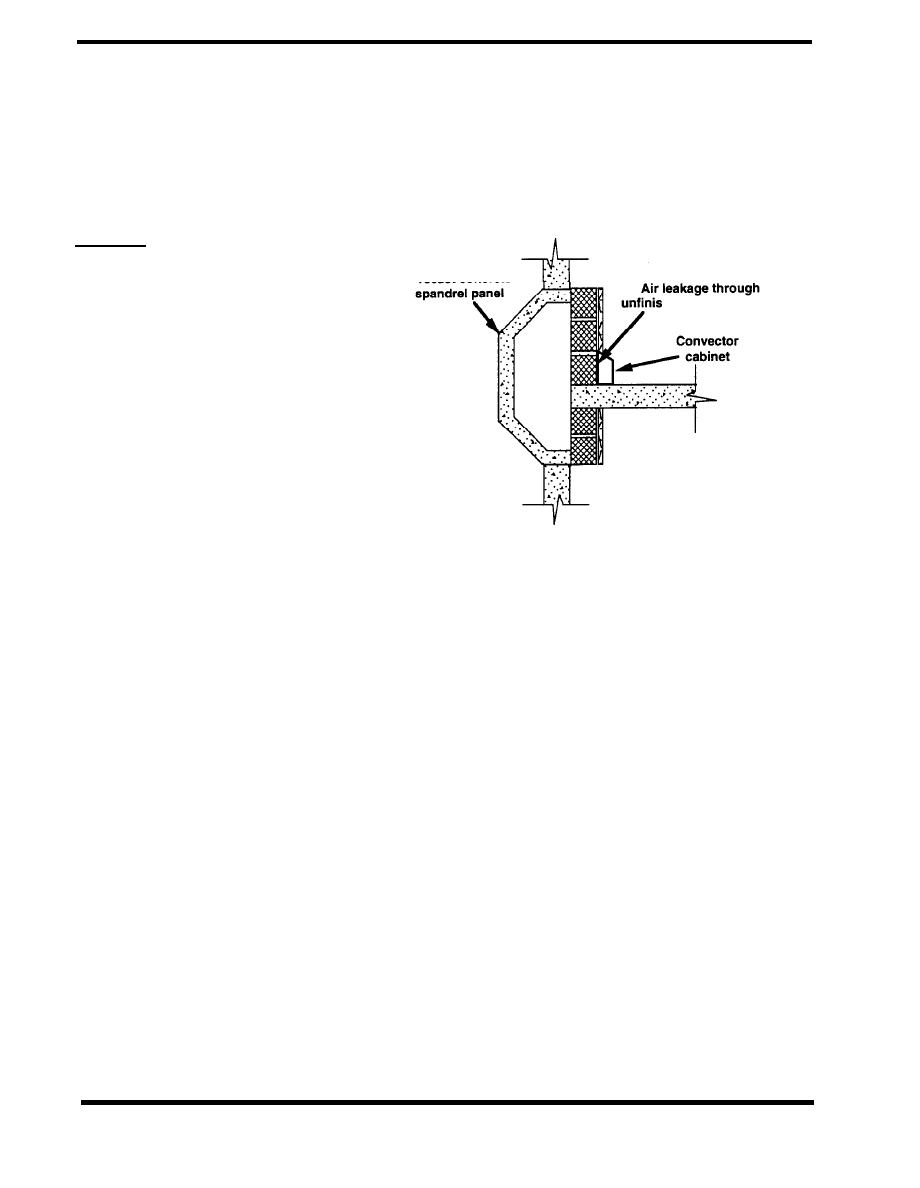
DESIGN/AIR
BARRIERS
Ah-tightness: The materials comprising the air barrier system obviously must be airtight, but more
importantly these materials must be joined into a system such that the total assembly is equally
airtight (continuity). Many building materials are clearly impermeable to airflow, e.g. glass, sheet
metal and various membranes. Other materials are permeable to airflow, though this permeability
is not always recognized, as in the case of a single wythe of masonry construction.
UNACCEPTABLE
Example: The importance of air
impermeability, specifically that of concrete
blocks, is demonstrated by the example
Precast concrete
depicted in Figure 3.1.3 (Quirouette 1989).
hed concrete block
The figure shows a precast concrete panel
wall with U-shaped column covers and C-
shaped spandrel panels on a cast-in-place
concrete frame with a concrete block infill
wall. The blocks behind the convector
cabinets were left exposed and untreated.
Air passed through the blocks, into the
space between the infill wall and the
spandrel panel, and up behind the column
covers. Severe condensation, freezing and
melting problems occurred.
Figure 3.1.3 Air Barrier Permeability
(Quirouette 1989)
Durability: The air barrier materials and the assembly must be known to have sufficient durability
and demonstrated longevity in the field. If not, the air barrier materials should be positioned in the
envelope such that they can be inspected and serviced as necessary. One must recognize that
durability is not an inherent material property but is a function of how the material reacts to
environmental exposures, i.e., temperature, moisture, radiation (UV) and adjacent materials.
Perreault and others have pointed out the use of inappropriate materials as air barriers:
Insulation materials do not necessarily prevent the flow of air, unless specifically designed to
l
serve as part of an air barrier system that meets all of the above requirements.
Mastic is often used in masonry walls as an insulation adhesive and can serve as an
l
adequate vapor retarder, but it cannot serve as an air barrier. As Perreault points out,
mastic does not have the material properties required to bridge gaps and fissures on
masonry surfaces, and therefore it cannot achieve the requirement of continuity.
Polyethylene sheet or film is an effective vapor retarder material, but because it is not strong
l
enough to withstand wind pressures, it is not suitable for controlling air leakage without
adequate structural support. Polyethylene will perform if well-supported on both sides, but it
is not strong enough to bridge openings. Another material could be used to bridge these
openings, but it must be sealed to the polyethylene. In addition, the long-term durability of
polyethylene has been questioned.
PAGE 3.1-4



 Previous Page
Previous Page
